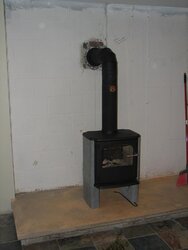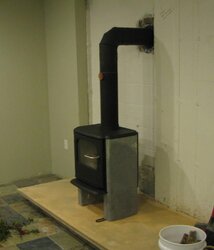I've read and heard conflicting views on pipe cement and its use. Some people have told me, including stove dealers who install, that I should not use cement on the joints of my conector pipe as it makes cleaning difficult, while others, many on this forum (including craig) have said to always use cement on pipe joints. I recently lit my morso 3450 and had a small amount of smoke in the room, which I'm assuming came from these joints - I have not used cement.
So should I use cement and how will this affect my abilty to clean the pipe, and how often should I clean the pipe.
Thanks to Vi's recent posts, and chimneysweeps answers, I'm now a little more knowledgable on why my soapstone clad stove seems to take a while to get to a stage where I can leave it alone.
I've attached a picture of the installed stove.
So should I use cement and how will this affect my abilty to clean the pipe, and how often should I clean the pipe.
Thanks to Vi's recent posts, and chimneysweeps answers, I'm now a little more knowledgable on why my soapstone clad stove seems to take a while to get to a stage where I can leave it alone.
I've attached a picture of the installed stove.



